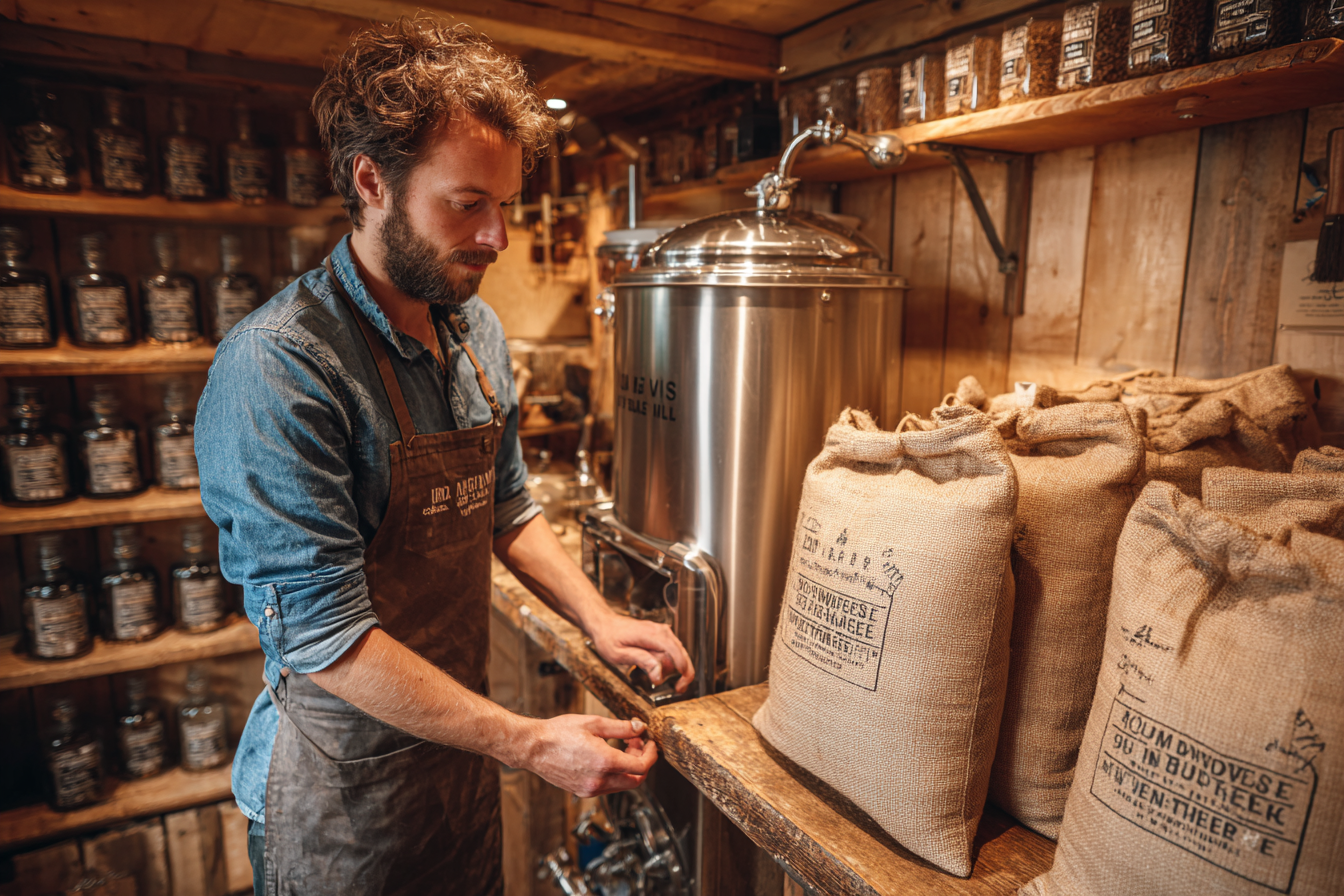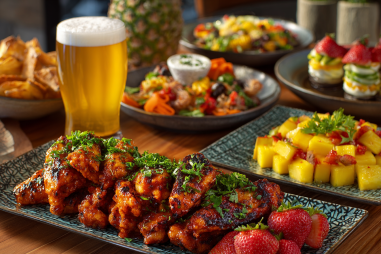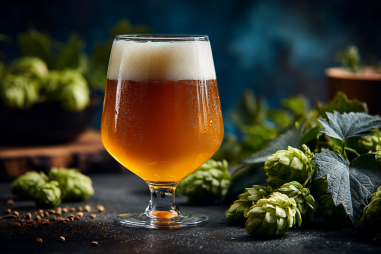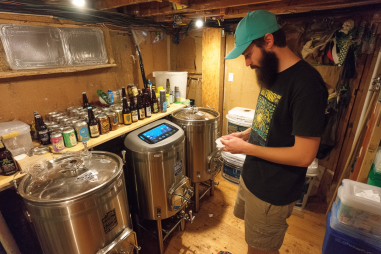Brewing a Rye IPA at home offers a fantastic opportunity to explore bold flavors and slightly unconventional ingredients that set this style apart from the common IPA. Rye malt introduces a distinctive spicy character that can beautifully complement the fruity and piney notes of hops. However, balancing these elements requires attention to detail and a touch of finesse. Whether you’re a seasoned homebrewer or trying rye for the first time, this guide provides essential Rye IPA brewing tips to help you craft a beer that’s both flavorful and harmonious.
Importance of Rye Malt Handling
Rye malt is the defining ingredient in a Rye IPA, but it behaves differently than more traditional malts such as pale malt or pilsner. Its unique grain structure, which contains more pentosans and beta-glucans, can increase the viscosity of your wort, leading to potential lautering challenges. This means you need to approach malt handling with care to get the best extraction and avoid stuck mashes.
Here are some key points when working with rye malt:
- Limit the percentage: Typically, rye malt constitutes between 15% and 30% of the grain bill. Higher amounts intensify spice but can cause lautering difficulties and haziness.
- Consider rye malt preparation: Some brewers prefer using flaked rye or rye flakes for better mash filterability, while others use malted rye. Both have slightly different flavor profiles and functionality.
- Adjust water chemistry: Rye benefits from balanced water with moderate carbonate levels to maintain good enzyme activity during mashing.
- Mash at the right temperature: A mash temperature around 148–152°F (64–67°C) is ideal for breaking down proteins and achieving proper starch conversion while ensuring rye’s spicy character remains.
Taking these precautions ensures your wort is flavorful and manageable, setting the foundation for a successful Rye IPA.
Balancing Hop Additions
Hops and rye malt spice are the heart of a Rye IPA’s distinctive personality. However, balancing their contributions is crucial so that neither overpowers the other. The hoppiness should complement the spicy maltiness rather than mask it.
To achieve a well-balanced hop profile, consider the following:
- Choose hop varieties wisely: Hop varieties with piney, earthy, or resinous character such as Simcoe, Centennial, Amarillo, or Columbus work exceptionally well to marry with rye’s spice.
- Layer your hop additions: Use a combination of bittering, flavor, and aroma hops. Early additions provide bitterness to balance malt sweetness, while late additions and dry hops add aroma and more nuanced hop flavors.
- Be mindful of timing: Rye’s spiciness can interact with early hop bitterness nicely but may become muddled if the bitterness is too harsh or prolonged.
- Experiment with dry hopping: Dry hopping can amplify hop aroma without increasing bitterness, helping to showcase fresh hop notes alongside rye’s distinctive spiciness.
Striking the right hop balance helps your Rye IPA come alive with complexity and depth.
Yeast Selection and Fermentation Control
The yeast strain you select has a significant influence on the final flavor profile and drinkability of your Rye IPA. Some yeasts enhance fruity esters, while others contribute clean fermentations that highlight malt and hops.
Key considerations for yeast and fermentation include:
- Choose yeast that complements spice and hops: English or American ale yeast strains tend to work well. English strains often impart mild fruity esters that complement rye spice, while American strains provide a cleaner profile to let hops shine.
- Control fermentation temperatures: Maintaining a steady temperature within the yeast’s optimal range prevents undesirable off-flavors and helps achieve consistent results.
- Use a healthy yeast starter: Rye malt can introduce more complex sugars and proteins, so pitching adequate healthy yeast ensures proper attenuation and yeast health.
- Consider yeast flocculation and attenuation: Moderate attenuation leaves some residual sweetness that balances hop bitterness and rye spiciness.
Managing yeast and fermentation thoughtfully ensures your Rye IPA is well-rounded and clean while highlighting its complex flavor layers.
Managing Spice Levels for Flavor Harmony
Rye malt naturally contributes a spicy, peppery quality, which is one of the signature traits of a Rye IPA. However, controlling the intensity of that spice is essential to maintain flavor harmony. Too much spice can clash with hops or overpower other malt notes.
Here’s how you can control the spice balance:
- Adjust rye percentage in grain bill: As mentioned earlier, keeping rye below 30% typically prevents overpowering spiciness.
- Blend with complementary malts: Use clean pale malts, Munich, or Vienna malts to provide malt backbone and complement the rye’s spice.
- Experiment with rye malt type: Malted rye may have softer spice notes than raw or flaked rye, so choose accordingly.
- Control hop bitterness and aroma: By balancing hop additions thoughtfully, you ensure the spiciness does not dominate.
- Adjust fermentation profile: Yeast esters can add fruity notes to balance and mellow some of the sharper rye tones.
By managing the spice, you create an inviting and complex Rye IPA that invites repeated sips.
Temperature and Timing Considerations
Temperature and timing play critical roles throughout the Rye IPA brewing process, from mash to fermentation and conditioning.
- Mash temperature: As discussed, aim for 148–152°F for ideal enzyme activity and to control wort body and residual sweetness.
- Lautering time: Rye can cause a sticky mash, so extend lautering time and recirculate carefully to avoid stuck mashes but ensure clarity.
- Boil duration: A typical 60-minute boil works well, but watch hop addition timing closely to achieve your desired bitterness and aroma.
- Fermentation temperature: Keep below 70°F for ale yeasts to prevent unwanted phenols and off-flavors that can complicate the spicy notes.
- Conditioning and dry hopping timing: Dry hop after primary fermentation slows down or pauses but before bottling/kegging for max aroma without introducing vegetal flavors.
Mindful timing and temperature control throughout the brewing process preserve the integrity of the Rye IPA’s complex flavor components.
Avoiding Common Mistakes
Brewing a Rye IPA can come with challenges, but being aware of common pitfalls helps you avoid them and improve your results.
- Too much rye malt: Overloading rye can cause lautering issues, excessive haze, and overly aggressive spice.
- Imbalanced hoppiness: Excessive or insufficient bitterness or aroma hops can overshadow the rye component or leave the beer dull.
- Fermentation problems: Not controlling yeast health or temperature can lead to off-flavors that compete with rye spice.
- Ignoring water chemistry: Rye malt can benefit from specific water adjustments, so neglecting this can affect mash efficiency and beer flavor.
- Skipping process adjustments: Treat rye blended mashes differently in lautering and brewing than typical pale malt setups.
By recognizing and addressing these potential issues, you’ll unlock the full potential of your Rye IPA brew.
Brewing with Rye: Embrace the Challenge and Creativity
Rye IPAs offer a wonderful playground for homebrewers who enjoy experimenting with spice, hops, and malt character. While rye adds complexity and challenge, it also rewards you with a beer full of personality and versatility. Careful attention to malt handling, hop balance, fermentation management, and process control will help you produce a Rye IPA that’s both delicious and uniquely yours.
So gather your grains, select your favorite hops and yeast, and dive into the world of Rye IPA brewing. Each batch is an opportunity to refine your technique, develop your palate, and create a beer that stands out in the IPA landscape. Happy brewing!







